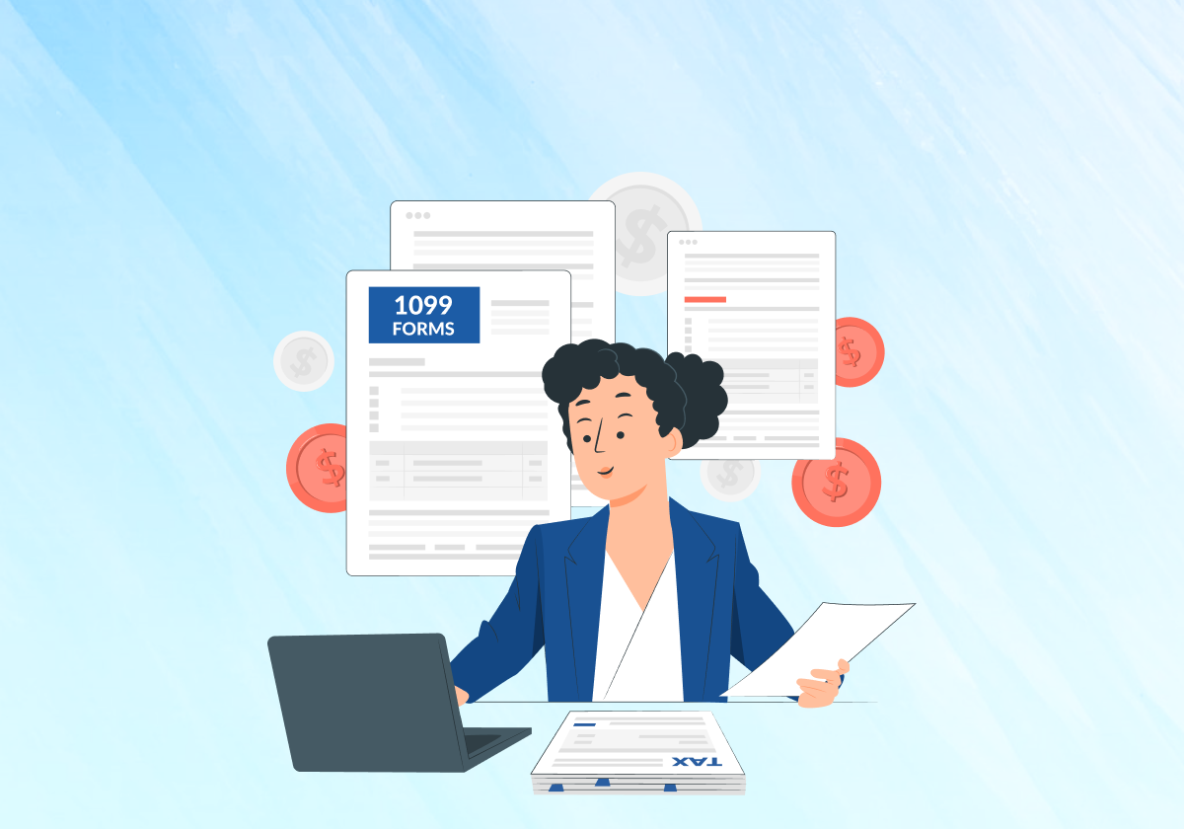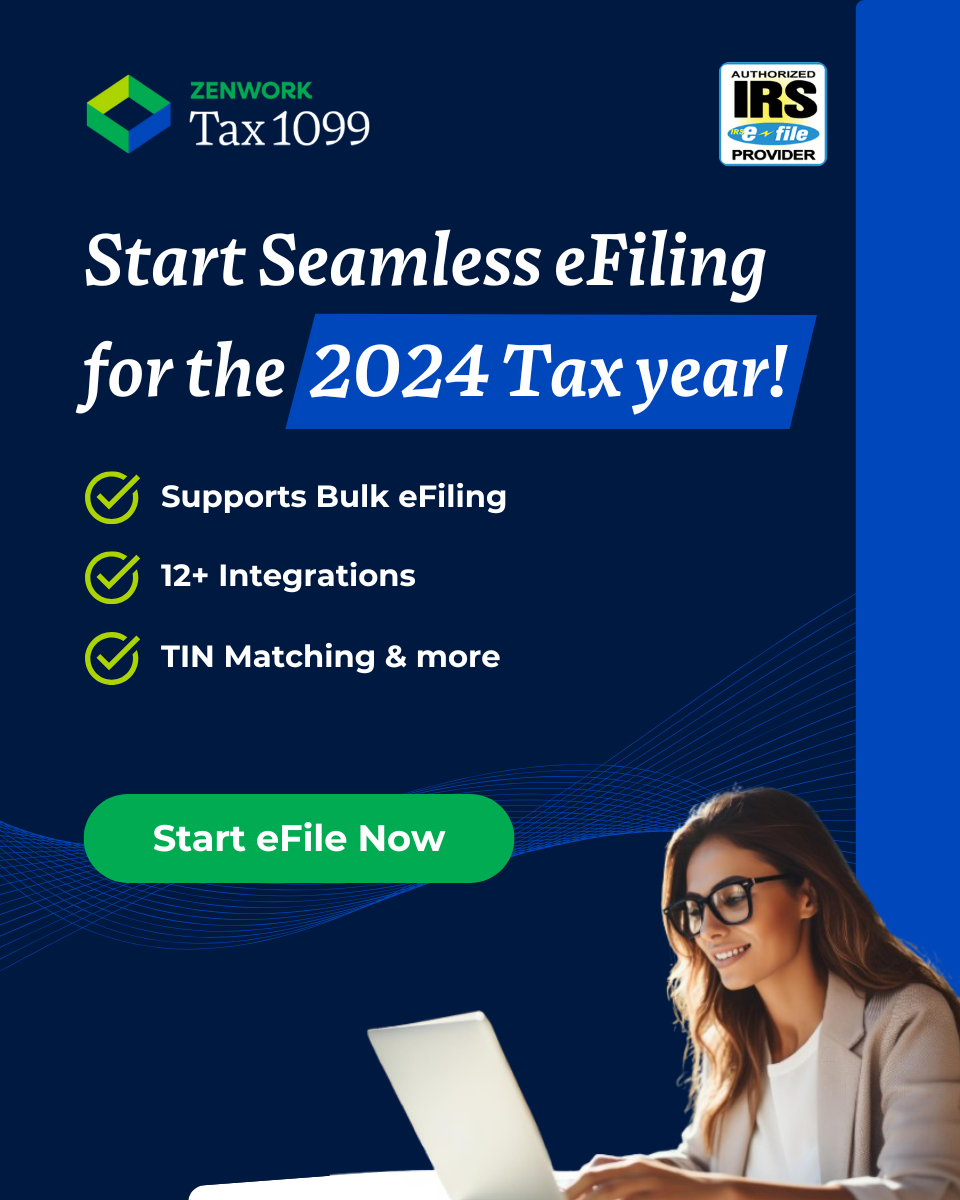A 1099 form is used as an example of a collection of documents generally referred to as “information returns” by the Internal Revenue Service (IRS). Various 1099 forms report different types of payments or other economic activities that individuals or businesses may participate in during the year. The goal of this program is to create a complete picture of a taxpayers tax position by the IRS to match that to the submitted information on a final tax return.
What is Form 1099?
The 1099 Form has many uses, most commonly understood to report payments made by a business to non-employees or contractors but are used for a broad range of activity that eventually may impact a taxpayers tax obligations. The payer completes the form, sharing details with both the recipient and the IRS to report activity during the tax year.
In some cases- a copy is also sent to the state taxing authority. The payer is responsible for filling out the relevant 1099 tax form and delivering it to the recipient. These payments can include rental income, earnings from freelance or independent contractor work, state or local tax refunds, prize winnings, and more. While most 1099 forms must be provided by January 31, in certain instances, this deadline is extended to February 15.
There are many different types of information returns. Each type is used to report a different type of payment or transaction. Most information returns fall within the 1099 series of forms. Here’s a partial list:
- 1099-A– Acquisition or Abandonment of Secured Property
- 1099-B– Proceeds from Broker and Barter Exchange Transactions
- 1099-C– Cancellation of Debt
- 1099-DIV– Dividends and Distributions
- 1099-G– Certain Government Payments
- 1099-INT– Interest Income
- 1099-K– Merchant Card and Third- Party Network Payments
- 1099-MISC– Miscellaneous Income
- 1099-OID– Original Issue Discount
- 1099-PATR– Taxable Distributions Received from Cooperatives
- 1099-R– Distributions from Pensions- Annuities- Retirement or Profit-Sharing Plans-IRAs- Insurance Contracts- etc.
- 1099-SA– Distributions from an HSA- Archer MSA- or Medicare Advantage MSA
- 1099-S– Proceeds from Real Estate Transactions
- 1099-DA– Reports Digital Assets
Who files Form 1099?
Various 1099 forms are designed to document payments made in different scenarios between individuals or businesses.
For instance, if you work as an independent contractor or freelancer, you might receive a 1099-NEC from a payer detailing the payments made to you during the year. It’s important to note that filing the 1099-NEC is not mandatory for payments below $600, although the payer may choose to do so.
You don’t require to file the 1099 Forms for the following cases:
- Corporations
In the rare instance that an independent contractor is registered as a C corporation or S corporation, you are not required to submit Form 1099 for them. To determine a contractor’s incorporation status, review the information provided on their Form W-9, which you should request upon hiring. Additionally, note that corporation names often include an “inc.” Suffix.
2. Employees
The IRS maintains clear distinctions between employees and non-employees, and misclassifying workers as independent contractors, often to evade social security and Medicare taxes, can lead to penalties. For reporting wages, tips, and other compensation paid to employees during the tax year, use Form W-2.
- Contractors
Avoid filing 1099s for contractors engaged through freelance platforms like Upwork or Fiverr, as these platforms, classified as payment settlement entities, do not furnish tax documents. Businesses are not required to issue 1099-NEC forms to workers hired through these platforms.
Who receives Form 1099?
Instances where you may receive a 1099 include:
- You would receive a Form 1099-NEC if you earned $600 or more in non-employee compensation from someone other than your regular employer.
- Form 1099-MISC is issued if you earned $600 or more in rent or royalty payments.
- Expect to receive Form 1099-G if you received a state or local tax refund in the previous year.
- If you paid $600 or more to a freelancer, independent contractor, or non-employee for services related to your trade or business, you should provide them with Form 1099-NEC.
How to file a 1099 form?
Two versions of Form 1099 exist: Copy A and Copy B.
When you engage an independent contractor, you’re required to report the payment details on Copy A, which is submitted to the IRS. Simultaneously, you must provide the contractor with Copy B, containing the same information.
If you’re an independent contractor and receive Form 1099, Copy B from a client, there’s no obligation to send it to the IRS. Instead, you report the income indicated on Copy B on your individual income tax return.
- Collect the required information
Before initiating the completion and submission of the 1099, you must ensure you possess the following information for every independent contractor:
– The total payment made throughout the tax year.
– Their legal name.
– Their address.
– Their taxpayer identification number, usually their Social Security Number (unless they are a Non-Resident or Resident Alien).
- Submit Copy A to IRS
Copy A of Form 1099 must be submitted to the IRS by 31st January to 15th February (based upon the type of 1099 Form), regardless of whether you file electronically or by mail. If you choose to file a physical Form 1099, you cannot use a printed version of Copy A from the IRS website. Instead, you must acquire a physical Form 1099, complete Copy A, and mail it to the IRS.
- Submit Copy B to Recipients
Copy B of the 1099 Form is typically provided to the recipient of the income, which is often an independent contractor or someone who has received payments subject to reporting on the 1099. It serves as a record of the income earned and is used when reporting that income on the personal income tax return.
- Check for State Filing
Depending on your business’s location, you might need to file 1099 forms with the state. Tax1099 can assist you in filing both federal and state tax forms.
File Form 1099s online with Tax1099
Tax1099 is an IRS-approved eFiling platform for 1099, 1098, W-2, and several other forms.
3 Simple Steps to eFile Form 1099 with Tax1099.
- Create:
- Log in to your Tax1099 account.
- Select the form type (e.g., 1099-NEC, 1099-MISC) you need to file.
- Enter the required information for your business and recipients.
- Validate:
- Verify your data using the Tax1099’s features like TIN match, address validation, etc. to ensure it meets IRS requirements.
- Resolve any identified errors or discrepancies.
- Submit:
- Choose the eFiling option and follow the prompts to transmit your forms securely to the IRS.
- Track the status of your filings and send physical copies or through eDelivery.
Experts at Tax1099 help you Kick-Start Your Digital Tax Filing Process.



